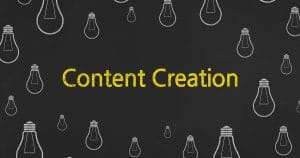The social media world is an ever-changing landscape.
LinkedIn’s robust analytics and marketing tools are among the most overlooked aspects of this social media platform. The platform is also one of the most underrated social media platforms for marketing.
There are many reasons to use LinkedIn for marketing, from its giant database of professionals to relevant ads and high clickthrough rates.
In this article, I’ll walk you through a step-by-step process on how to grow your connections and B2B leads on LinkedIn quickly.
First, let's talk about LinkedIn.
Despite LinkedIn’s many advantages, not all marketers know how to access and apply LinkedIn data.
LinkedIn is the world’s largest professional network, with more than 930 million members, striking a powerful chord in virtually every industry imaginable. LinkedIn is also ideal for B2B marketing. According to one estimate, 62% of all B2B interactions take place on LinkedIn.
LinkedIn might be pretty obvious as a B2B business tool, but some preconceived notions hold many people back from investing time on the platform.
First off, some people assume that the number of users on LinkedIn is fewer than other social networks and thus not worth the trouble. In reality, the platform is thriving. With professionals of all types hanging around daily on LinkedIn, you have many potential clients at your disposal. And remember: there are 930 million members to get through.
Next, some people might assume that LinkedIn is dull and outdated. That’s quickly becoming untrue. LinkedIn has a corporate feel to it, but guess what? Those are your prospects.
LinkedIn is a professional network, after all. Not to mention, it’s “the world’s largest professional network,” according to LinkedIn. Any marketing professional who claims to be using social media but ignores LinkedIn is doing their business a disservice.
So what’s the first step to building an engaged pipeline on the platform that eventually leads to increased inbound sales and revenue?
Step 1: Optimize your profile for connecting.
One of the most important things to work on is optimizing your personal and business profile. More than any other social platform, this is important because LinkedIn wants to know who they are hearing from and are credible. Additionally, an optimized profile allows you to increase your discoverability on the platform.
What do I mean by this?
When it comes to your headshot, make it a clear, professional image as it serves as the initial impression of your profile.
Your headline is equally crucial — it communicates who you are and what you do. It takes a few seconds for a prospect to determine if there is a fit for your business. When they only see your headline, they will decide if it’s worth reading, and your profile views will go up. Make sure you give people a good reason to continue reading your profile.
The summary section is a prime opportunity to make a lasting impression. Your summary is another place to make a statement and capture the attention of someone who will read about you. Make sure this is a paragraph that tackles who you are, what you do, and how it will benefit them. Add keywords that describe your expertise and experience, so that your profile is discoverable by prospects. However, keywords in LinkedIn are like SEO keywords; you don’t want to overuse them
Once you have completely optimized your profile for your target audience, what’s next?
Step 2: Follow up with old leads before targeting new ones.
Instead of jumping into the deep end and reaching out to a considerable volume of people with who you don’t have any real connections, stay true to your community and send follow-up messages to existing customers.
Following up with your old leads is a great way to uncover how you can reach them and what they might be interested in purchasing. It’s also an opportunity for you to find out if they noticed a change in your product or service that would make them more likely to either purchase it now or consider doing so in the future.
By opting to follow up with your existing leads first, you’ll be able to leverage your connection with them, build up your online persona, and stay true to your existing customer base. Most importantly, you’ll be able to uncover new ways to reach your target market.
Step 3: Identify decision-makers.
Don’t target just anyone.
Rather than casting a wide net and connecting with anyone, the best group of people to connect with on LinkedIn are the decision-makers.
Individuals who hold significant influence and decision-making power within their organization can open doors for you — valuable opportunities, collaborations, and partnerships.
By concentrating on this specific group, you tailor your outreach to those who have the authority to make substantial decisions. This targeted approach increases the likelihood of your messages reaching individuals who can directly impact business outcomes.
After you have your targeted list of companies, employees, and decision-makers, take the time to engage with their content before sending a connection request.
Step 4: Engage and nurture your prospects.
LinkedIn is a social networking platform. Like all other social platforms, engaging with new and existing prospects as well as clients through sharing, commenting, and liking content is one of the best ways to build solid relationships with your LinkedIn connections and leads.
Reach out to people with a personalized message and engage with their content before requesting a connection.
Firstly, it establishes familiarity. Decision-makers are more likely to accept connection requests from individuals who have actively participated in their online discussions or showcased an interest in their professional endeavors. Secondly, it allows you to contribute meaningfully to the platform’s community, positioning yourself as an active and credible expert. Finally, with this approach, you avoid coming off as someone whose intention is only to get them to buy from you.
Your intent should be to connect, not sell on LinkedIn.
On top of standing out to your prospects, you’re also building rapport with them.
Step 5: Put lead generation on autopilot with content marketing.
Publishing valuable content on LinkedIn is one of the most impressive features of the platform. The reach that you can have on their publishing platform is unprecedented, even if you’re unknown on other platforms. With the ability to have your post or article seen by thousands of people, LinkedIn is an impressive way to build your brand and become the thought leader in your industry.
When publishing on LinkedIn, you can either post status updates, publish on LinkedIn Pulse, or publish your business blog. You could use LinkedIn Groups for content marketing, but we’ve not seen as many positive results as we’ve seen in the other options already mentioned.
Status updates are the best way to reach a large group of your likely prospects within a short period. They have the highest engagement across all forms of content and only take a few minutes to make. If you’re part of several different communities or groups, making regular status updates is a great way to build yourself up and drive engagement.
LinkedIn Pulse is also a great way to reach out to people outside of LinkedIn and drive them to your website.
And your business blog is a fantastic way to connect with your potential customer by creating a meaningful relationship with him or her.
Step 6: Amplify your reach.
What spurs the LinkedIn algorithm to promote you to people beyond your first-level connections?
Engagement on your LinkedIn posts and comments.
Here are a few tips to increase engagement on your posts:
1. Make your posts easy to read. Posts that do well on the platform tend to be shorter, conversational, and easy to read. The best posts also include thought-provoking questions at the end of each post so that people will want to hop onto the thread and comment.
2. Use document posts. LinkedIn prioritizes the promotion of document posts right now! Leverage the type of content formatting, but keep your slides under 20.
3. Use hashtags. Getting people to find your content can be helpful when trying to drive leads. Using hashtags is a great way to get your content into the hands of people you have not connected with on LinkedIn.
4. Build anticipation. Setting up a campaign around an upcoming blog post is a great way to boost engagement. People love to be a part of something, so when you give them something to work towards, engagement rates and even leads will start to climb.
5. Don’t be afraid of controversy. This tip works well for more prominent brands and corporations but can also work wonders for small business owners. If your content can cause controversy, people will be more likely to engage with it.
Keep in mind that creating high-quality posts is a necessary part, but not the whole battle. If you aren’t engaging with those who commented on your posts, your reach will take a significant hit!
On the other hand, here’s how you can increase likes, replies and profile visits with just a single comment on a prospect’s post:
1. Echo the content’s sentiment if you agree and add further insights, or
2. Share your dissenting opinion in a friendly and professional manner, or
3. Ask a thoughtful question (remember: the post owner appreciates engagement as much as you do!), or
Using Engage AI can help speed things up as it drafts well-crafted comments that you can edit and add your personal touch before posting.
Bottom Line
Lead generation is a numbers game. That’s what we’ve all heard. In other words, find a large number of people who fit your ideal customer profile, reach out to them, and a certain percentage will respond.
The problem is that this approach is just covering old ground, and you risk generating mediocre leads without really leaving an impact on your target market. That’s why it’s important to source quality leads on LinkedIn.
From there, you need to engage with others actively and create quality content to increase your online visibility.
So there you have it: a helpful list for you to build an engaged lead pipeline! How would you approach lead generation to ensure the quality of leads and create a meaningful impact on your target market?








